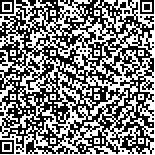下载中心
优秀审稿专家
优秀论文
相关链接
摘要

监测植被长势动态变化可以提供生态系统状况有价值的信息,可以检测到人类或气候作用引起的变化。本研究利用2004—2005年间10期MERIS影像数据,以福建省为例,探讨MERIS数据在区域植被长势季节变化监测中的应用效果;分析了MERIS数据用于区域植被季节变化监测时的数据处理方法;比较了MERIS数据几种植被指数,提出了利用10和8波段组合改进MERISNDVI的建议;利用多时相合成的NDVI简单分析了2004年夏季—2005年夏季三个季节的植被长势状况。结果表明,MERIS植被指数的时空变化有效反映了气候变化对植被长势的影响。
关键词:
ENVISAT-MERIS NDVI 福建省 遥感 季节变化Within the biosphere,vegetation is critical as it supports the bulk of human and animal life and largely controls the exchanges of water and carbon between the land and the atmosphere.Monitoring vegetation dynamics gives valuable information on the condition of an ecosystem.Human or climatic induced changes can be detected and consequences like overuse can be avoided.Remote sensing can provide the necessary spatial and temporal explicit data for a continuous monitoring.The Medium Resolution Imaging Spectrometer(MERIS),on board of ENVISAT-1 fulfils the information gap between the current high and low spatial resolution sensors.Natural resources can also be monitored at global and regional scales every few days using the MERIS data.In this respect,the use of MERIS full resolution data(300m pixel size) has a great potential for regional and global land cover mapping.MERIS is a fully programmable imaging spectrometer covering visible and near-infrared wavelengths.It is a multidisciplinary instrument operating in the 390 nm to 1040 nm spectral range.Often vegetation indices are used in order to assess information on vegetation dynamics and conditions.This paper presents a first analysis of MERIS-Full Resolution(FR) data to observe seasonal variations of Normalized Difference Vegetation Index(NDVI) in Fujian province,South China.Because of too heavy cloud contamination only ten dates within the time interval from June 2004 to August 2005 were available:28/6/2004,11/7/2004,17/7/2004,18/8/2004,6/3/2005,6/6/2005,24/7/2005,27/7/2005,3/8/2005,9/8/2005.First,Process method for monitoring seasonal variety in region vegetation is discussed;Second,A few kinds of NDVI calculated by near-infrared bands and red band is compared with one another;Third,NDVI in summer 2004 and summer 2005 were acquired by maximum value composites(MVC).The results of our investigation based on above show:(1)The image geometric precision derived from the MERIS tie point grid is good for monitoring large scale land cover ,with good alignment with Fujian province boundary vector data;(2)Flags files in MERIS data can not only supply the satisfying product which distinguish ocean from land,but also cloud detection product;(3)NDVI got by combining band 10(near-infrared)and band 8(red)better than that got by combining band 10 and band 6;(4)Condition vegetation growing in summer in 2004 is evidently inferior to that in 2005 according to combined NDVI got by combining band 10 and band 8;(5)Temporal and spatial change of MERIS-NDVI preferably responses to climate change in the study area.These meteorological variables influence NDVI variability at different seasons and time lags.Vegetation responds to short-term climate variability in complex ways and serves as a source of memory for the climate system.There are a few of problem in the study because of the limitation of data source in amount and quality.(1)In order to decrease error in vegetation change result,the effect to NDVI by the insufficiency resulted from cloud detect should be investigated;(2)Only three seasonal vegetation change in one year were analyzed.For get more reliable conclusion,more years time serial MERIS data should be gathered and investigated;(3)Both MERIS and MODIS are Medium Resolution Imaging Spectrometer.They have like spatial resolution.If advantage of MERIS and MODIS vegetation indices could be integrated.Vegetation dynamics would be more effectively monitored.So,advantage and disadvantage with MERIS and MODIS data vegetation indices should be discovered by comparing MERIS data vegetation indices with that of MODIS data in-depth.

